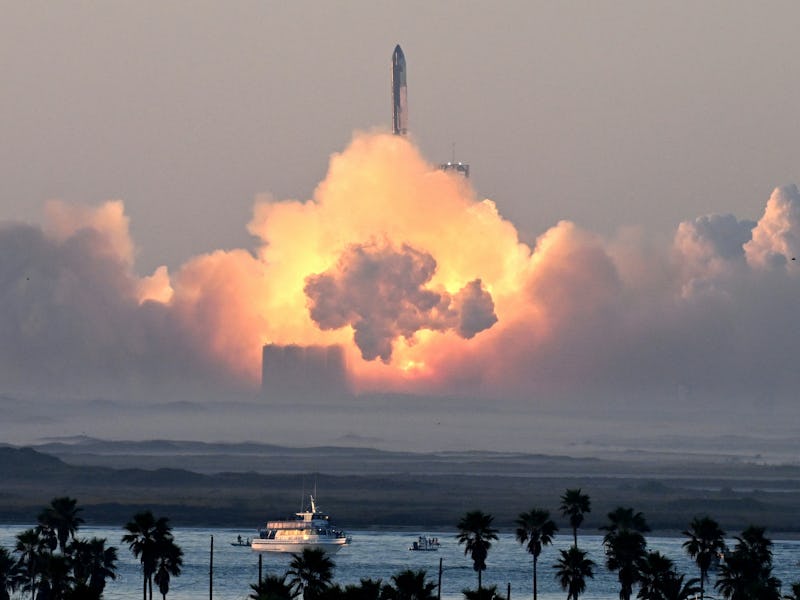SpaceX’s Starship Megarocket Reaches Space But Explodes In Second Test Flight
The world’s largest rocket reached space, which was a success for the company.

SpaceX attempted a second launch of its Starship rocket on Saturday morning. The rocket reached space for the first time today, but its Super Heavy booster, which propelled it to space, exploded shortly after separation from the rocket. The Starship rocket itself lost contact and is presumed to have exploded as well. The rocket is currently the world’s most powerful one ever built, and the company hopes it could carry astronauts back to the Moon and eventually to Mars.
In the uncrewed test, which was the system’s second trial, the Starship rocket peaked at about 90 miles above Earth before it lost contact. SpaceX engineers say they think an “automated detonation occurred.” The Super Heavy booster also blew up shortly after it separated from the Starship rocket in what’s called a “rapid unscheduled disassembly.” In other words: Both the booster and the rocket blew up.
If it hadn’t exploded, Starship would have made an almost full trip around Earth before landing in the Pacific Ocean.
Was this Starship test successful?
The system still has a long way to go before it can take a crewed mission to the Moon.
This is SpaceX’s second test flight for the Starship rocket system, which encompasses two major pieces: the Super Heavy booster and the Starship rocket. Back in April, the company’s inaugural test lasted just a few minutes before the rocket’s engines failed entirely, and it exploded in a highly spectacular fashion.
Between April and now, SpaceX made a number of key changes to the two-part system. The biggest fix was adding a shield to where the booster and rocket meet, which protects the booster from the rocket’s hot engines. SpaceX also made changes to the Starship rocket itself to prevent fuel from leaking out.
The company also had to correct a number of smaller attributes of the rocket system that the Federal Aviation Administration (FAA) knocked SpaceX for before it would give it license to launch again. SpaceX received the go-ahead from the FAA on Wednesday of this week.
Even with the explosion of both the booster and the rocket itself, the test is still considered an incremental success. Namely, the booster and the rocket separated from each other, and the rocket reached space for the first time. If the rocket hadn’t made it to space, this would have been a major failure for SpaceX.
However, the system still has a long way to go before it can take a crewed mission to the Moon (or beyond). SpaceX has noted that it intends to perform numerous tests like this, even if they end in an explosive manner, to get its rocket system ready.
Why is Starship so important?
Elon Musk’s ultimate plan for Starship is for it to eventually bring human astronauts to Mars (though some experts believe a nuclear rocket is necessary for that kind of trip.)
Even so, a trip to Mars is still very far off. Right now, SpaceX is currently fulfilling its multi-billion dollar contract with NASA to use its Starship system (or some successful version of it) for the space agency’s Artemis missions, which will ultimately take humans back to the Moon for the first time in decades.